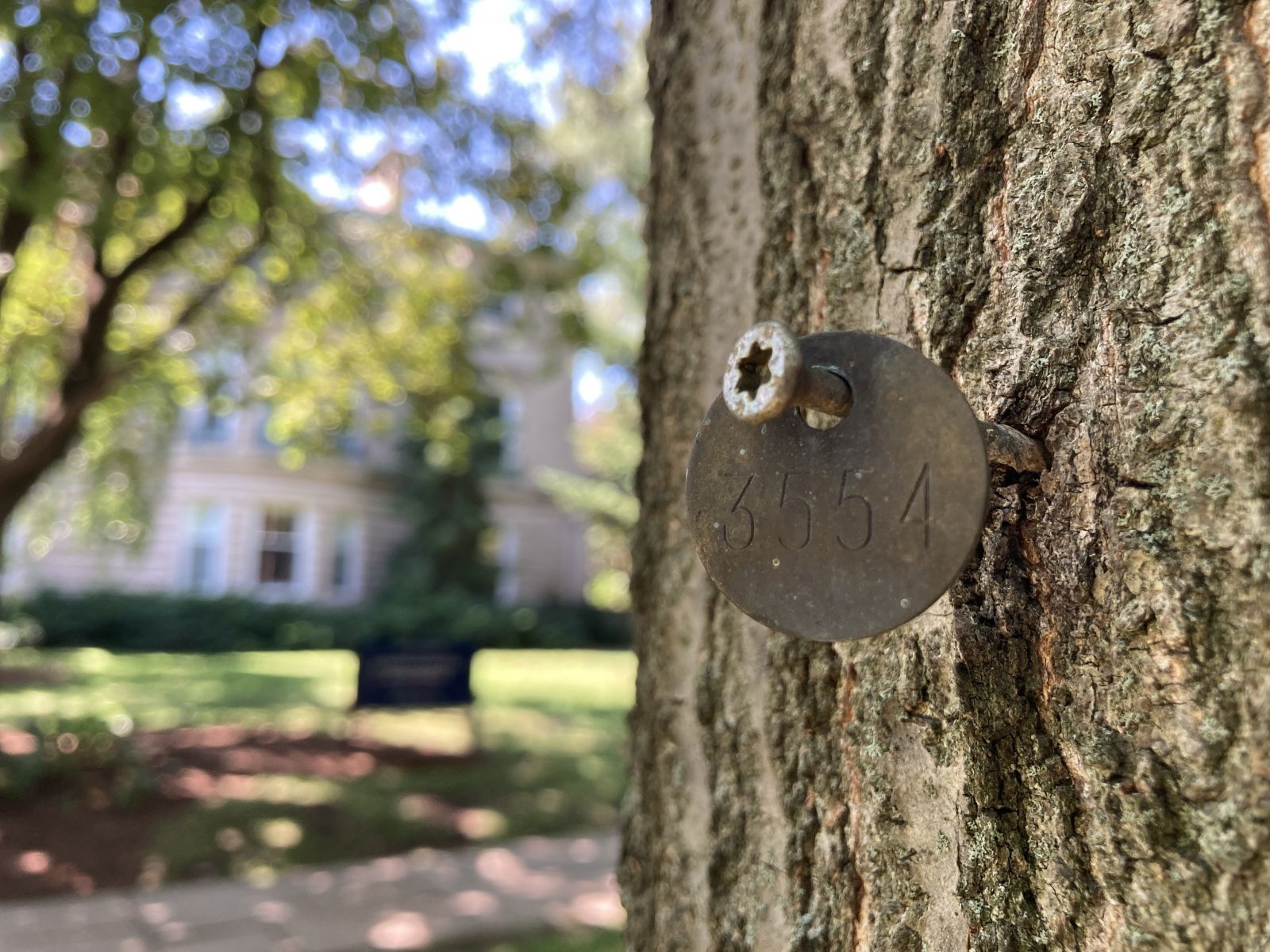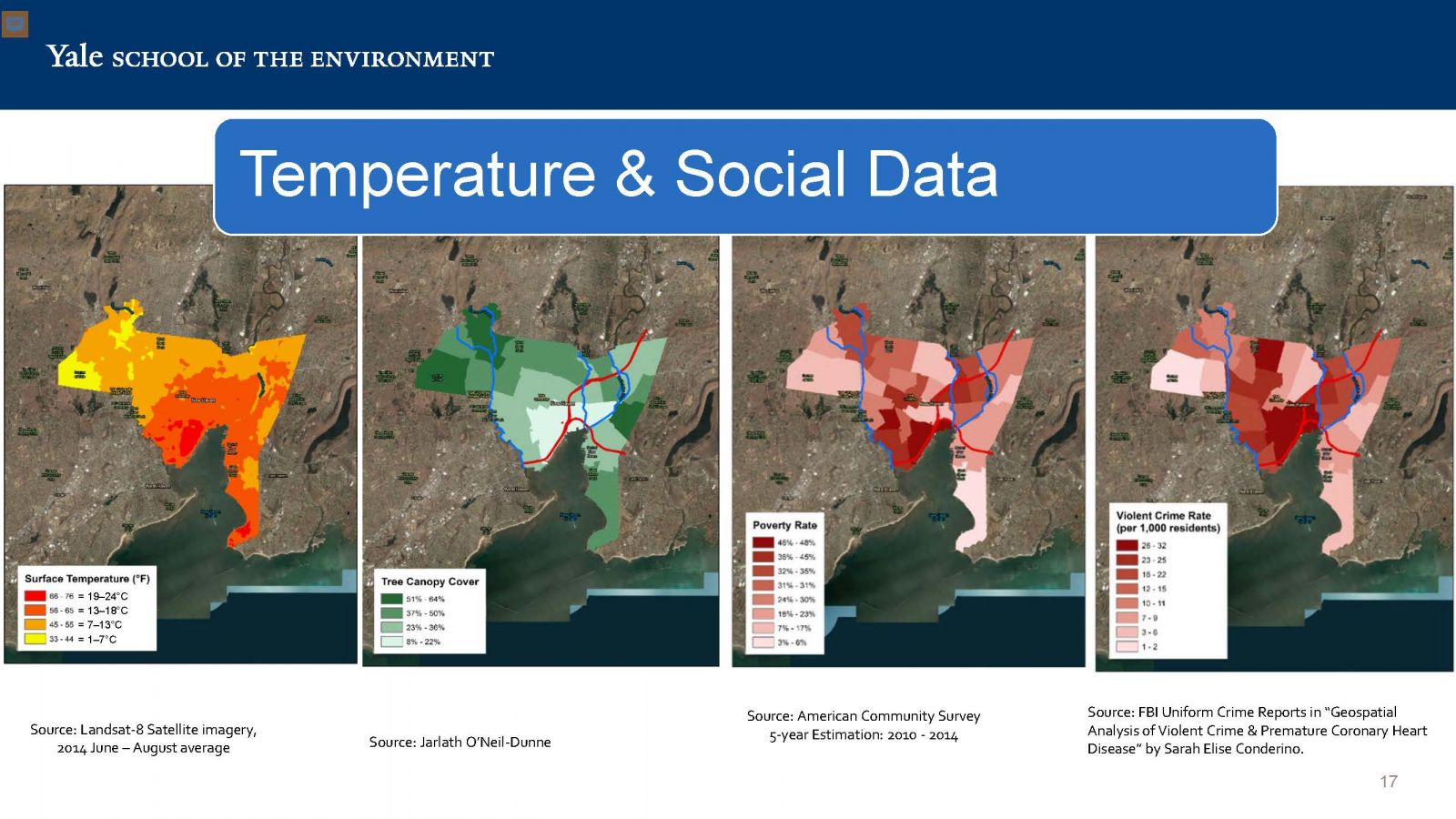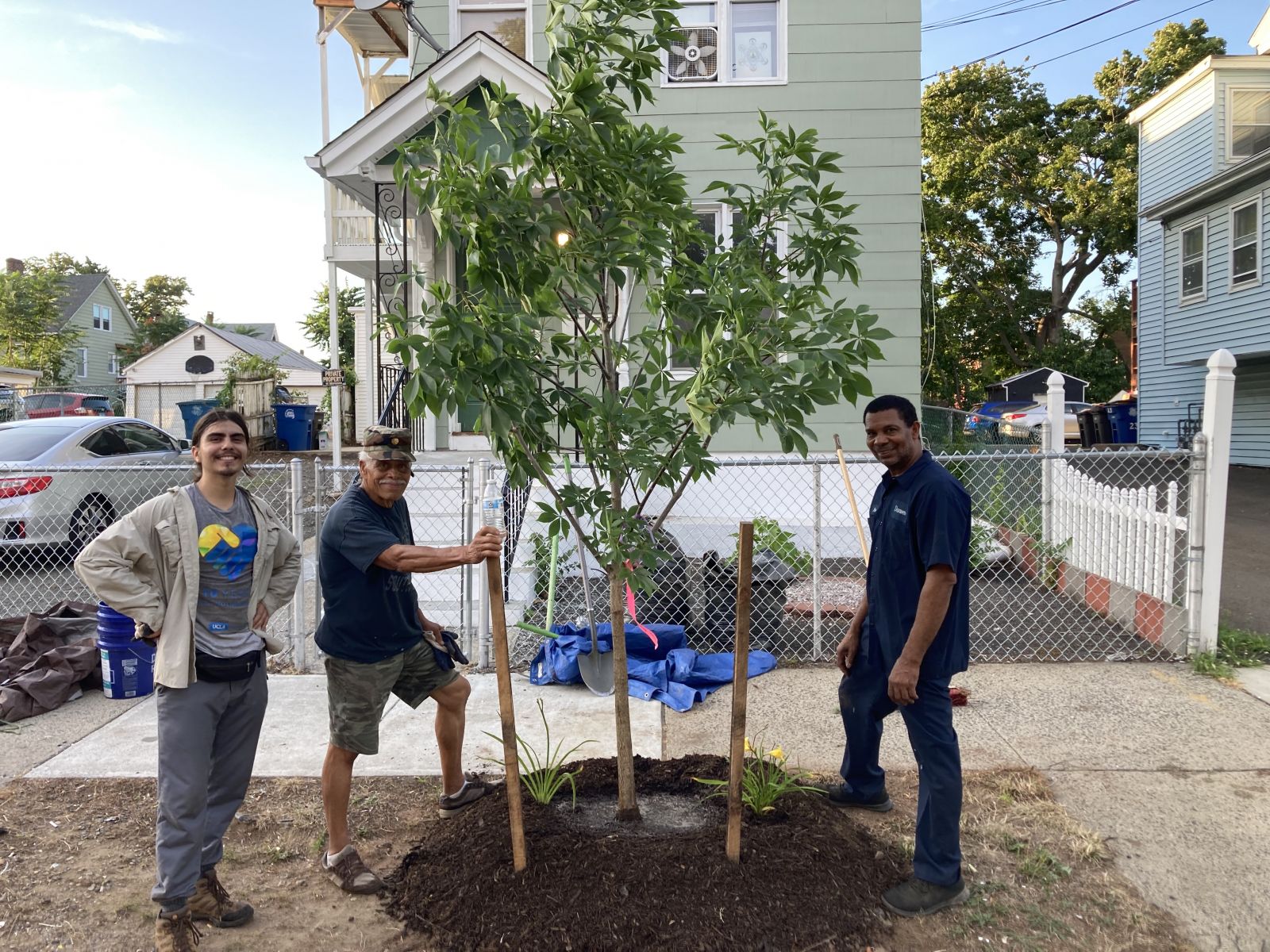
As heat waves turn cities into sweltering ovens, tree shade has become a critical tool to mitigate climate change—and Yale is working to promote a healthy tree canopy on campus and around New Haven.
Urban trees provide a host of benefits that blunt the effects of the climate change, and they are increasingly being treated as important infrastructure for cities. Trees sequester carbon dioxide, produce oxygen, reduce stormwater runoff by utilizing water before it’s channeled into a drainage system, and capture pollution particulates—especially ozone—through their leaves or needles.
And they provide shade—which can significantly lower temperatures in a city neighborhood.
In 2020, Yale completed its first Tree Management Plan with an eye toward sustaining a healthy urban tree canopy that can withstand the pressures of a changing environment. The plan provided the university with its first complete inventory of every tree on campus larger than 8 inches in diameter, and established guidelines for everything from pest management to protecting root systems during construction projects.
“The tree management plan allows Yale to proactively manage and plan for a campus landscape enhanced by trees. Among other things, trees help us save energy by providing shade for buildings and people, improve stormwater mitigation, and support campus biodiversity,” says Ginger Chapman, Director of the Office of Sustainability. “The plan provides guidance so our planners and operations staff can be as successful as possible in planting the right tree, in the right place, at the right time.”
A Game-Changing Management Tool for Yale’s Trees
Yale’s new Tree Management Plan was seven years in the making, but it took off in earnest just as SARS-Cov-2 began its global march in late 2019. While the pandemic shut down many university functions, the tree inventory was able to proceed safely outdoors.
Working with Michael Slattery, web developer at Yale School of the Environment, two forestry consultants hired by Yale—Bradley Painter and Mark Duntemann—assembled data on 6,413 trees across Yale’s campus, plus an additional 1,391 city-owned trees adjacent to Yale properties.
“Our consultants went out with handheld devices, standing at each tree and entering data about its size, species and condition,” explains Kristina Chmelar, Associate Director of Strategic Initiatives in the Office of University Planning, who oversaw the tree count. “Mike pulled it all into our GIS platform so it is in a usable format for our staff and contractors.”

Pictured: As part of Yale’s new tree management plan, every tree on campus greater than 8 inches in diameter—including this pin oak on Hillhouse Avenue—was inventoried and tagged, giving workers quick access to important data about each tree.
The data collection gave Yale its first clear view of the size, health, and diversity of its urban forest, allowing leaders to create a stewardship strategy that balances multiple needs such as tree health and safety, pest management, human health and enjoyment, and protecting tree root systems during construction projects.
“During construction projects in the past, our tree protection measures were typically limited to a tight area close to the tree trunks,” says Chmelar. “We are improving this by now requiring a chain link fence around the tree with a circumfrence of roughly 1.5 feet per 1 inch of trunk diameter. That keeps heavy construction machinery from damaging the tree root structures and makes a big difference.”
The 2020 tree inventory also allowed Yale to quantify the climate benefits of its urban forest. An analysis calculated that the trees on Yale properties remove 1.3 tons of pollution per year, sequester nearly 57 tons of carbon, and avert 71,000 cubic feet of runoff per year, among other benefits.
Though not a quantifiable metric, shade—and making more of it—was certainly a benefit the university had in mind when it created the plan, Chmelar says. “This plan lets us identify priority planting areas over the next five years, to provide more shade and improve the health of other trees by planting a diversity of species.”
A key part of the tree plan is that every five years, forestry consultants will return to re-inventory trees and collect data, including the trees’ climate benefits, so the University can measure its progress.
“The plan is new but it will take off as a major management tool for the future to let us analyze the benefit of each tree on campus,” Chmelar says.
Expanding the Tree Canopy Where it’s Needed Most
Connecticut is already facing intensifying heat waves and related health consequences. A 2020 report from the Yale Center on Climate Change and Health found that over the past century, six of the state’s hottest years on record have occurred since 2005. The same year that report came out, Hartford broke a 37-year-old record for the most days in a year reaching temperatures of 90 degrees Fahrenheit or above.
Cities are particularly vulnerable to rising temperatures due to the “urban heat island effect,” in which dark-colored asphalt, concrete, and metal trap the sun’s energy and re-emit it as heat, thereby increasing air temperature.
“Connecticut’s urban heat islands coincide with low-income communities and communities of color,” the report notes, “where housing more frequently lacks insulation, good ventilation, and air conditioning.”
Heat islands also have fewer trees. Overall, New Haven’s tree canopy cover is relatively good compared to other cities (around 38 percent of the city is covered by trees). But that coverage is not evenly distributed. Street tree inventory data collected by Urban Resources Initiative (URI), a nonprofit affiliated with Yale School of the Environment, reveal that trees are concentrated in New Haven’s whiter, wealthier neighborhoods, which stay cooler as a result.
Densely built neighborhoods with smaller building lots—the kind you find disproportionately in communities of color—frequently have less room for trees because they often lack green belts, front yards, or sidewalk tree pits. What’s more, renters usually can’t plant trees on property they don’t own and getting landlords’ permission is not always easy.

Pictured: Data maps of New Haven reveal how poverty, higher crime, and hotter temperatures are concentrated in neighborhoods with fewer trees. From left, the maps show: surface temperature; tree canopy cover; poverty rate; and violent crime rate. Source: Urban Resources Initiative, Yale School of the Environment
That’s where Urban Resources Initiative comes in. URI is actively engaged in community forestry around New Haven, chiefly by planting trees on city-owned property. Residents can request a free tree and members of URI’s Greenskills team—made up of Yale interns, high school students and adults with a history of incarceration—will come plant it, and show the residents how to care for them.
Last April, URI reached a major milestone when it planted its 10,000th New Haven tree—a shingle oak in Quinnipiac River Park. Yet despite that impressive feat, URI’s rate of tree planting—around 550 a year—is only enough to keep pace with trees lost to age, disease, or damage.
“We’re just treading water,” explains Colleen Murphy-Dunning, who serves dual roles as Director of URI and Program Director for the Hixon Center for Urban Ecology at Yale School of the Environment. “We are basically doing replacement rate.”
The mounting pressures of climate change—storms, heat waves, drought, and pests—will further challenge the ability to maintain and expand New Haven’s urban canopy, Murphy-Dunning says. And what might seem like a simple fix—plant more trees to provide more cooling shade—is actually a complicated question of science.
“People tend to think, just plant more trees, and plant more trees where people are lower-income,” says Murphy-Dunning. “But there’s still a lot of science that needs to be done in terms of how many trees need to be planted to bring down temperature.”

Pictured from left: Urban Resources Initiative crew members Joshua De-Anda, Ed Rodriguez, and Rosario de la Cruz after planting an autumn splendor buckeye on Wolcott Street in Fair Haven, the last tree of the 2022 summer season for URI’s Greenspace program.
While that science continues to unfold, URI crews are putting shovel to dirt, adding to New Haven’s canopy one tree at a time. A recent weeknight found URI volunteer Ed Rodriguez where he is almost every Tuesday in summer: planting trees in his Fair Haven neighborhood as part of URI’s community forestry efforts.
It was the last night of the summer planting season, and the group from URI—Rodriguez, volunteer Rosaria de la Cruz, and URI intern Joshua De-Anda (YSE ’23)—hauled two autumn splendor buckeyes off a flatbed truck to a sun-baked stretch of Wolcott Street in Fair Haven.
In just about two hours, the trio had the two trees planted, mulched, watered, and adorned with hostas and daylilies, adding beauty, greenery—and much-needed shade—to New Haven’s urban landscape.
Read Yale’s Tree Management Plan
Learn more about Yale Sustainability’s Priorities & Progress for campus stewardship
Sign up as a green space volunteer with Urban Resources Initiative